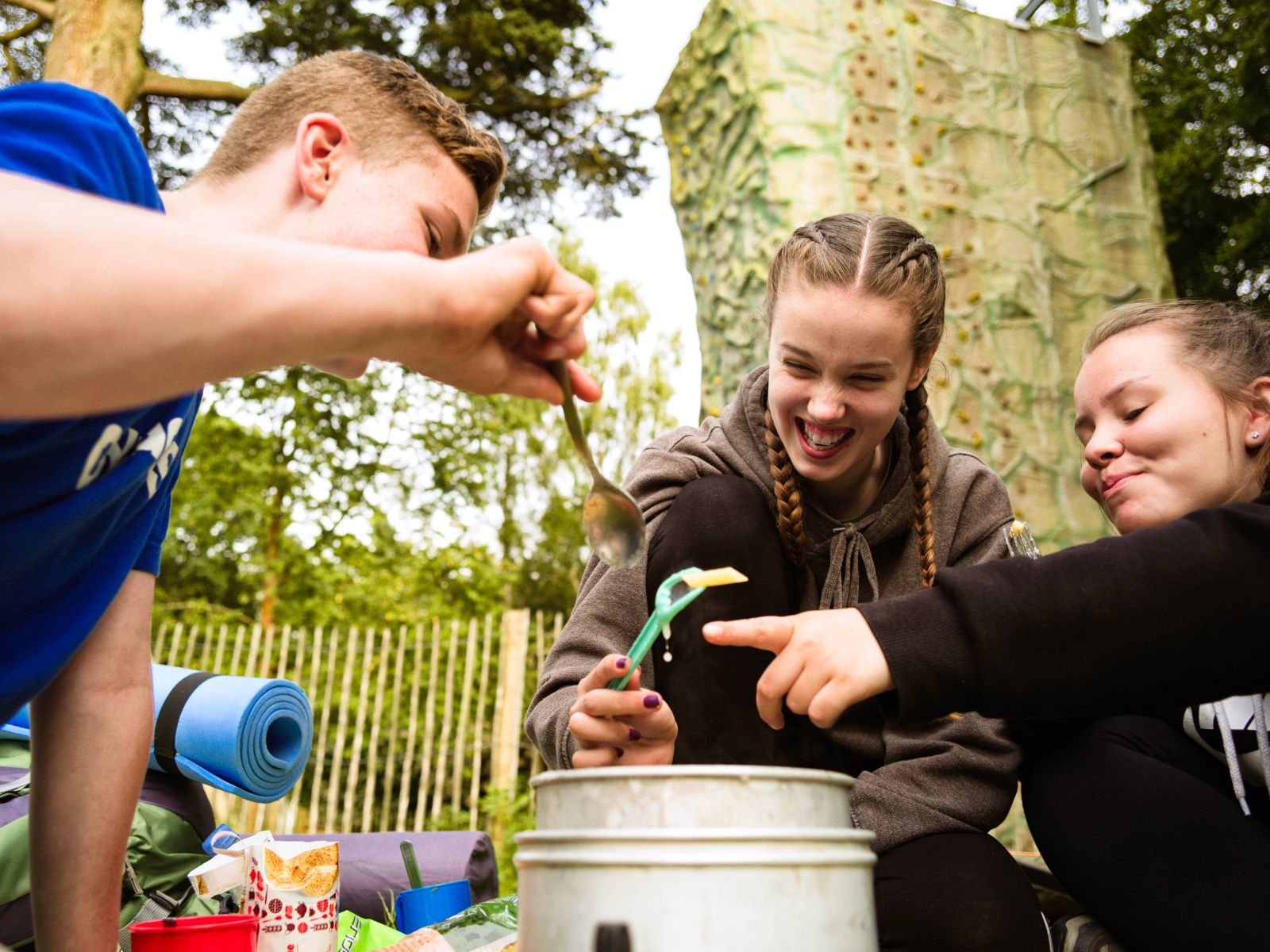Meal ideas for your DofE expedition
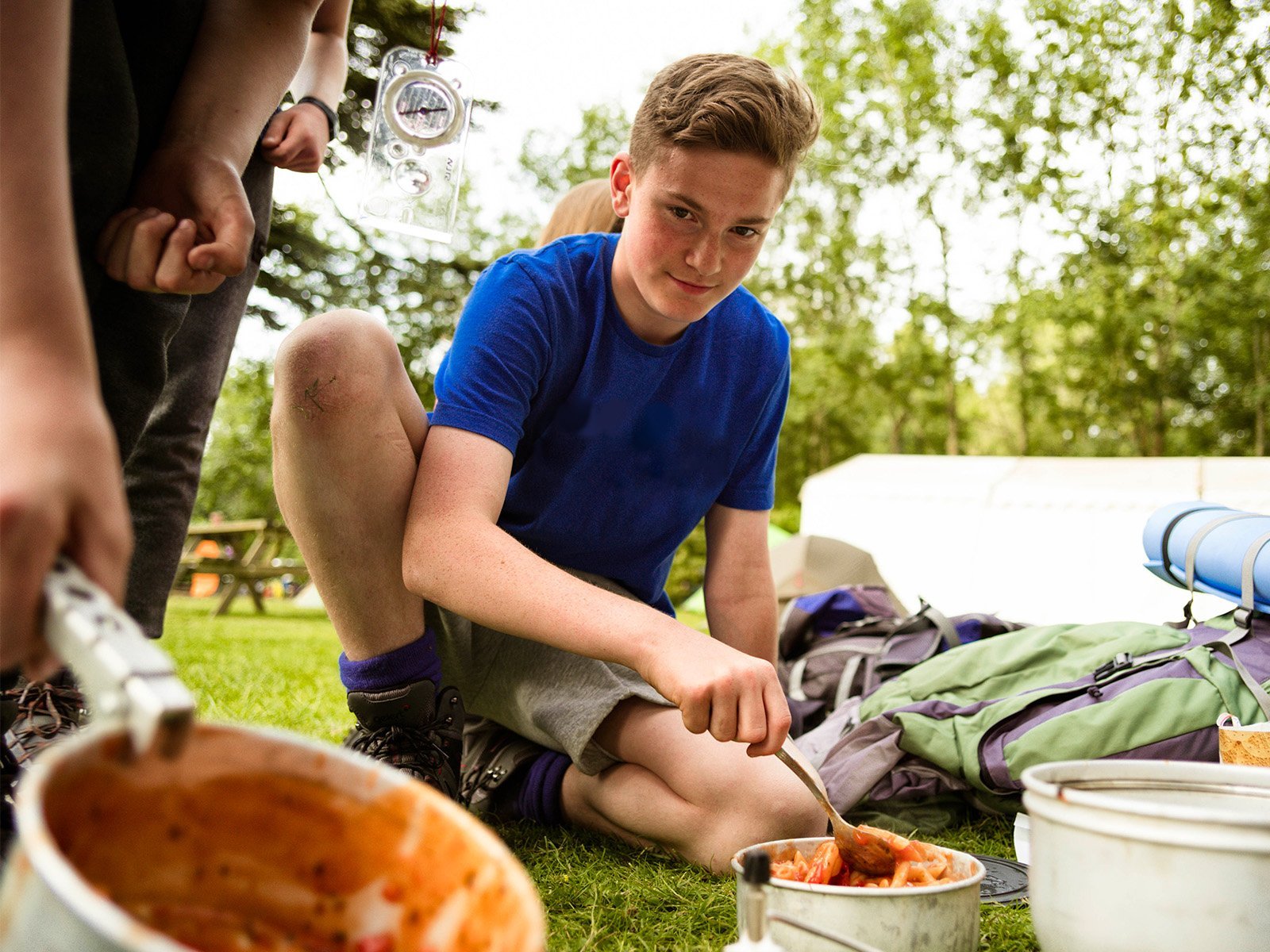
DofE expeditions are exciting adventures that involve a lot of physical exertion and mental stamina. These expeditions require you to carry your own food for the duration of the trip, which can be anywhere from two days (Bronze Award) to several days (Silver and Gold Awards). As such, meal planning and preparation are essential for a successful and enjoyable DofE expedition.
It’s important to note that eating properly is an essential for keeping up energy levels. With this in mind, we’ve come up with some awesome meal ideas to make sure you’re fuelled up and ready to go!
(Plus, if you’re looking for a super convenient and delicious option, we’ve got you covered with our DofE recommended Wayfayrer food pouches!)
Meal Planning Tips:
Before you check out our meal suggestions, here are some tips to help you plan your meals for your DofE expedition:
- Plan ahead: Make a meal plan before the expedition and pack everything you need in advance. Download our free Meal Planner to help you keep track of what you are eating each day.
- Consider nutritional needs: Choose meals that provide a good balance of carbohydrates, protein, and vegetables to keep energy levels up. Have you got any dietary restrictions that need to be considered?
- Keep it simple: Choose meals that are easy to prepare and require minimal cooking equipment.
- Pack light: Choose lightweight options to minimize the weight of your pack and distribute the food evenly between the group.
- Store food properly: Pack food in sealed containers or plastic bags to prevent spills and keep food fresh. Glass jars are not only heavy to carry around but could pose as a danger hazard if broken. Opt for sachets, cans, reusable plastic containers or silicone bags instead.
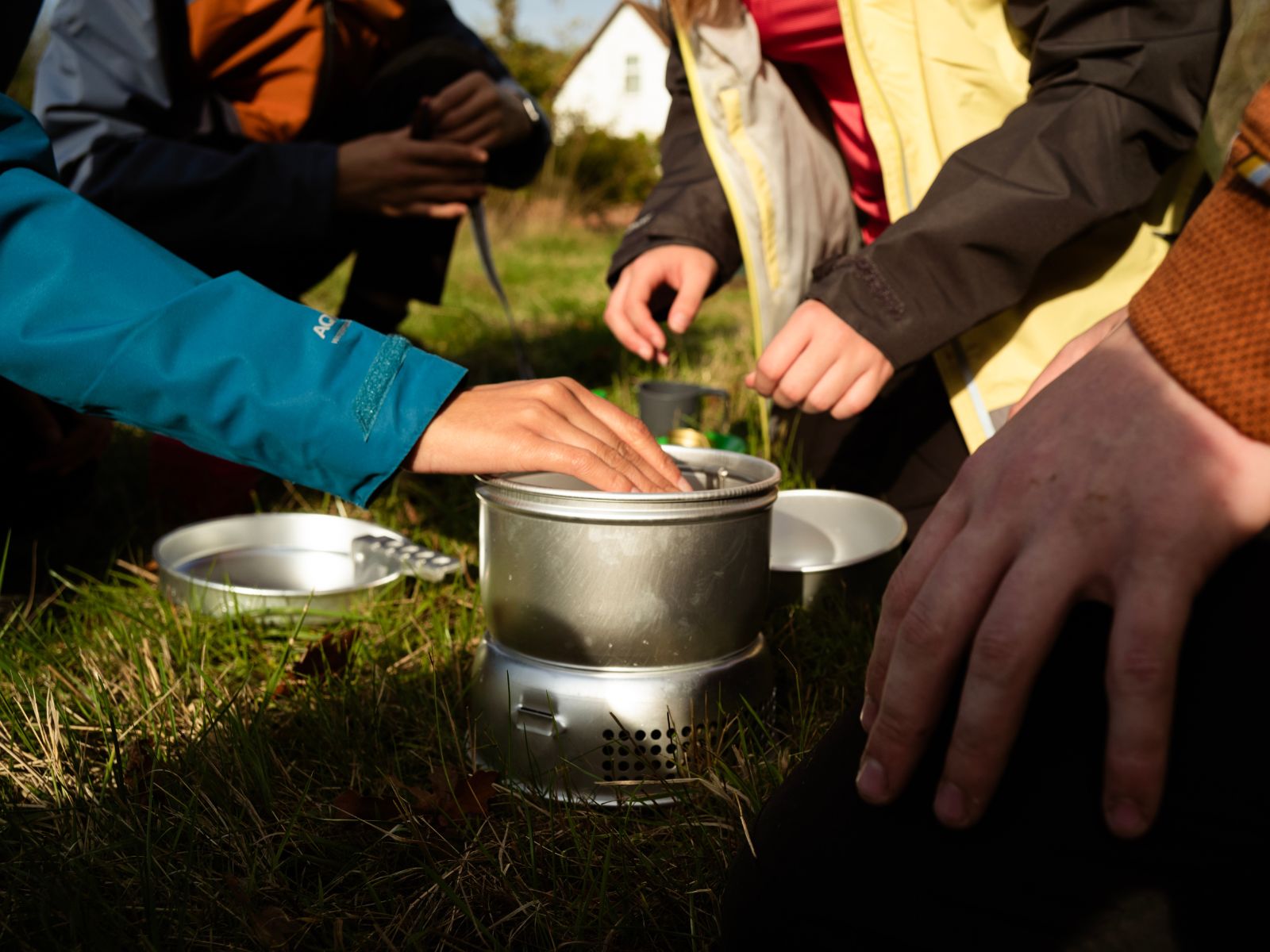
Breakfast:
First things first, breakfast! You need something filling and nutritious to start your day off right. Here are some hearty breakfast ideas to get your taste buds going:
- Pancakes: You can’t go wrong with pancakes! Bring along some pre-made pancake mix and simply add water. You can top them off with maple syrup, jam, or nut butter for an extra boost of energy.
- Instant Oatmeal: Oatmeal is a quick and easy breakfast option. You can bring individual packets or make your own by measuring out the desired amount of oats and adding hot water. You can customize it with toppings like dried fruit, nuts, and honey to give it an extra kick.
- Breakfast Burritos: This may sound complicated, but it’s really not! Bring along some tortillas, scrambled eggs (only for day one as eggs won’t last), shredded cheese, and your favourite toppings like bacon, sausage, or veggies. Assemble and wrap them up in tin foil for an easy grab-and-go breakfast.
- The Wayfayrer breakfast pouches are also perfect for this, including a choice of All Day Breakfast, Beans & Sausages, and Veggie Breakfast. These pouches are easy to prepare, and they’re packed with all the energy you need to tackle the day ahead.
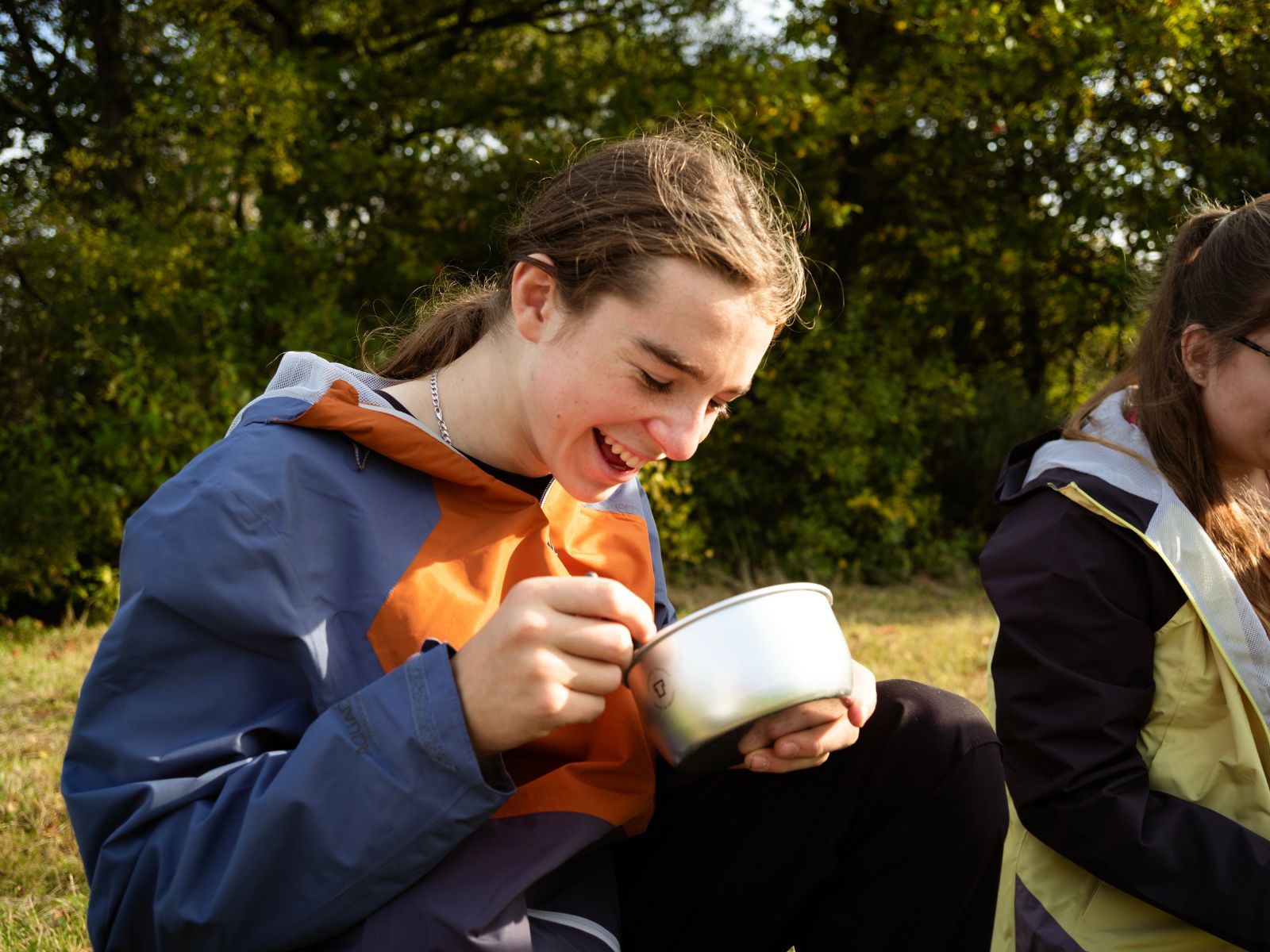
Lunch:
When you’re out on the trails, you need something quick and easy for lunch. You don’t want to waste precious time cooking up a big meal, so here are some ideas for lunches that are easy to prepare and packed with flavour:
- Wraps: Wraps are a great lunch option because they’re easy to pack and customize. Bring along some tortillas, your favourite deli meat or veggies, and condiments like mustard, mayo, or hummus (save miniature sachets from fast-food joints or bring a miniature plastic container for the hummus). Roll them up and wrap them in tin foil for a mess-free lunch.
- Sandwiches: You can’t go wrong with a classic sandwich! Pack some bread, deli meat, cheese, and veggies, and assemble on the go. Don’t forget the condiments! Tuna or chicken pouches make great fillers that don’t need to be kept in the fridge.
- Trail Mix: Trail mix is a quick and easy snack that’s perfect for a midday refuel. You can make your own mix by combining nuts, dried fruit, and chocolate chips, or bring along pre-made trail mix.
- Wayfayrer’s ready to eat meals are also a great, straightforward option! Choose from Mac & Cheese, Peri-Peri Chicken, or Meatballs & Pasta (if these don’t tickle your fancy, there’s other options available too!). These pouches are lightweight and easy to carry, so you can enjoy a delicious and filling meal anywhere. These are ready to eat, so ideal for lunch or a high energy snack whilst journeying.
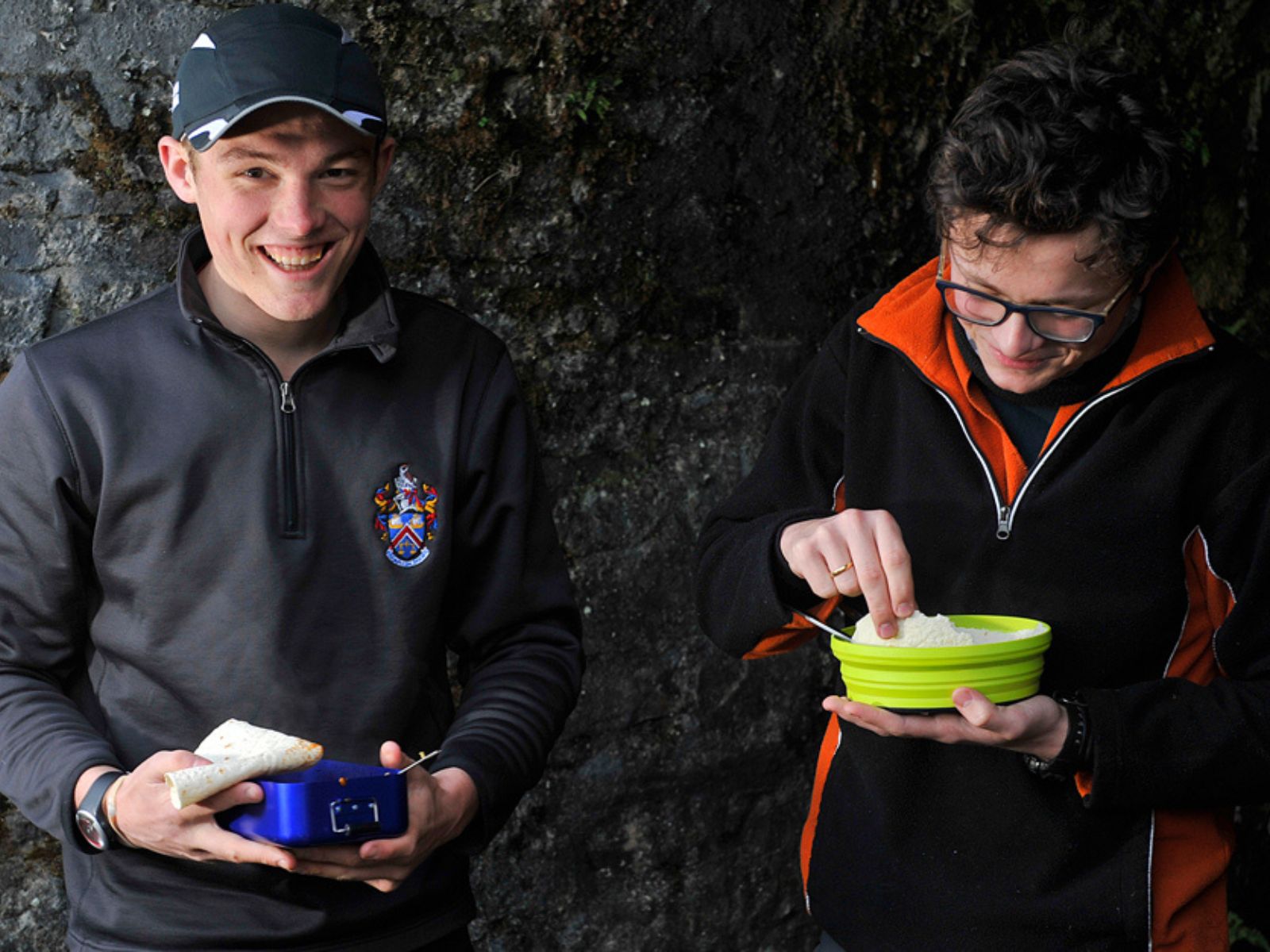
Dinner:
Dinner is often the most substantial meal of the day, and you’ll want something that’s filling, tasty, and easy to prepare. It’s also a great time to show off your stove safety skills and teamwork by preparing and cooking a hot meal together. Here are some ideas for dinners that will hit the spot:
- One-pot pasta: Pasta is an easy option that can be customized with a variety of sauces and toppings. You can bring along pre-made pasta sauce or make your own with canned tomatoes, garlic, and spices. Jazz it up with some of your fave veggies, like bell peppers, zucchini, or mushrooms and add a protein supplement if wanted (tinned hot dogs are a go to!). Also, don’t forget about the all-important sprinkling of cheese!
- ‘Wok and roll’ stir-fry: Noodles are an expedition staple. Fry your noodles in a pan with some oil until they’re tender but still slightly firm to the bite. Customize your meal by adding chopped vegetables such as broccoli, carrots, bell peppers, and onions and if desired, add in your protein option too, such as tofu or chicken.
- Campfire chilli: In a pot, cook ground beef or turkey until browned (or for a veggie option, add some tins of beans such as kidney, chickpea, pinto or cannellini). Add diced onions, bell peppers, and garlic, and cook until soft. Add a can of diced tomatoes, a can of kidney beans (as an extra for the meat version), and chili powder. Simmer for about 20-30 minutes until the flavours are well combined.
- Curry up and dig in: Whether its Thai green, Korma or any other type of curry, they’re quick and simple to create! Simply add rice to boiling water and simmer until light and fluffy. Whilst that’s going on, add your choice of chopped vegetables to a heated pan with oil and cook until tender. Add a sachet of curry sauce to your vegetables and cook for a few extra minutes. Add everything into a serving bowl and voila!
- Wayfayrer Food Pouches: If you want a super easy option, Wayfayrer food pouches are the way to go. They come in a variety of flavours like Pasta Bolognese, Chicken Tikka & Rice, and Veg Chilli & Rice. Just heat them up and enjoy! ALSO, there’s always room for dessert…right? Choose between the scrummy Chocolate Pudding or the rich Sticky Toffee Pudding.
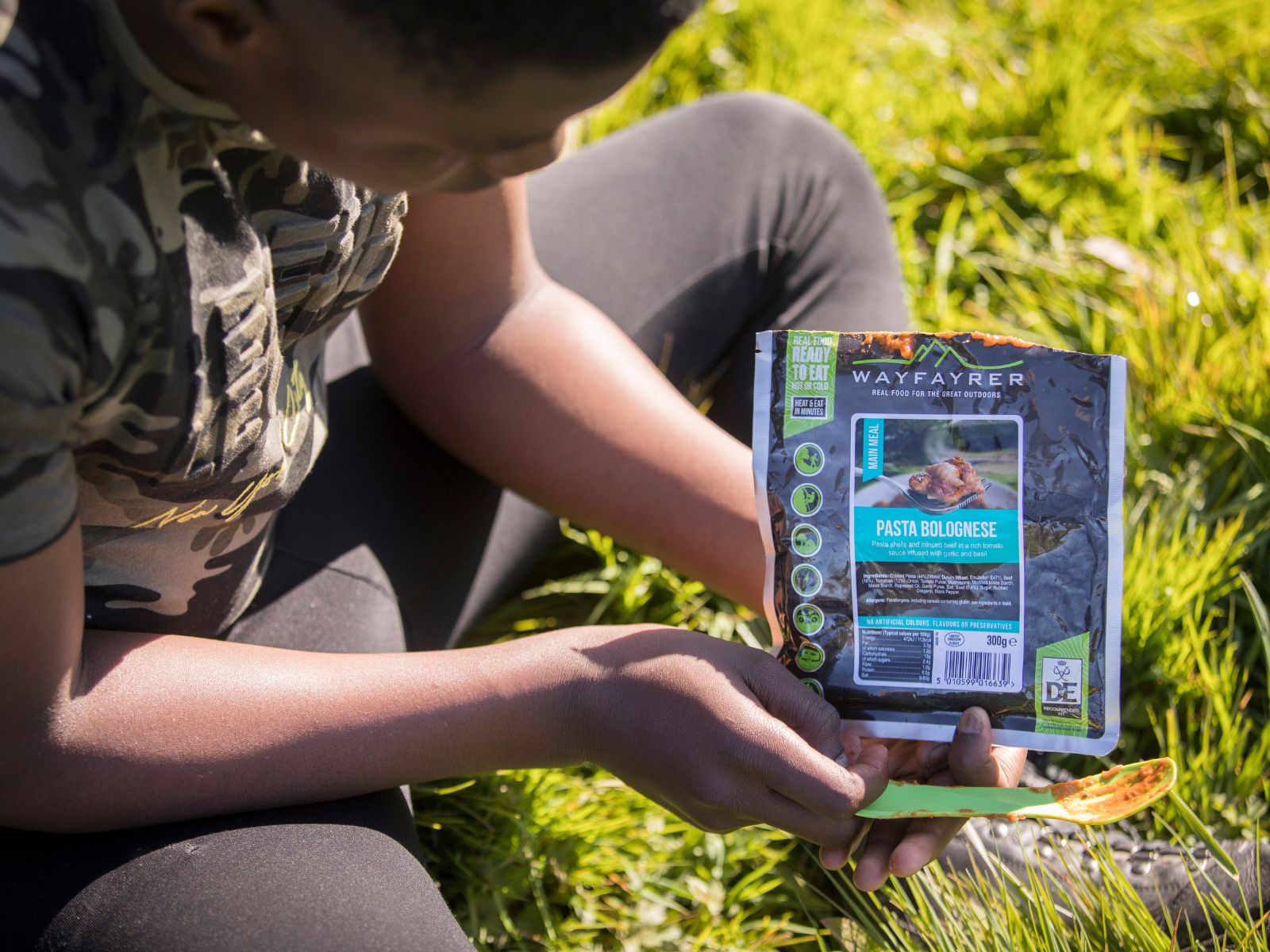
Let’s not overlook SNACKS:
Snacks are essential for keeping your energy levels up throughout the day. They boost morale and they’re great to share amongst friends, but please keep in mind that everyone has different dietary needs, so check with your group before trading!
Here are some ideas for easy and tasty snacks:
- Fresh Fruit: Apples, pears, and oranges are easy to pack, less likely to be squashed compared to softer fruits, and provide a quick source of energy.
- Energy Bars: There are so many varieties of energy bars available these days. Look for ones that are high in protein and fibre for sustained energy.
- Beef Jerky: Beef jerky is a high-protein snack that’s perfect for a midday refuel.
- Trail mix: Packed with protein, healthy fats, and carbohydrates, it makes for the perfect fuel for a long day on the trails.
- Cheese and crackers: A quick and easy savoury option. Cheese provides protein and calcium, while crackers provide carbohydrates for energy.
- And of course, the ever-popular chocolate bars! They may not offer as much nutritional value as the other options so please don’t rely solely on them, but who’s to say they don’t offer that little extra boost every here and there!
Meal planning for DofE expeditions can be fun and exciting with the right approach. By choosing convenient and delicious options, you can spend less time preparing meals and more time enjoying your outdoor adventure. With a variety of breakfast, lunch, and dinner options to choose from, you’ll never have to sacrifice taste or nutrition for convenience.
So, whether you’re embarking on a weekend camping trip or a full-blown expedition, make sure you’re well-fed and ready for anything with these awesome meal ideas. For even more tips and advice on what you eat on your DofE expedition, check out our free resources.
Happy exploring!
